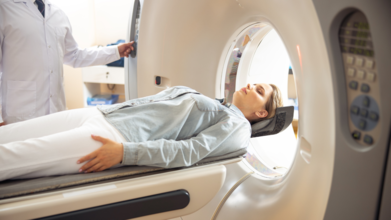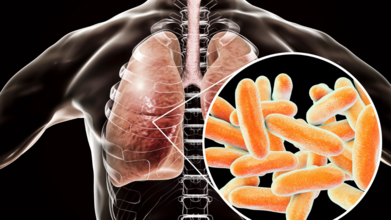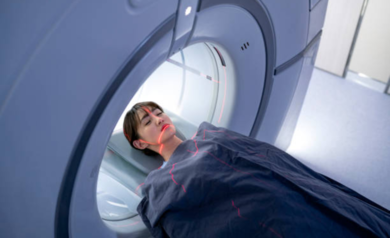- Health Conditions A-Z
- Health & Wellness
- Nutrition
- Fitness
- Health News
- Ayurveda
- Videos
- Medicine A-Z
- Parenting
- Web Stories
Strange Covid-19 'Razor Blade' Symptom That Has US Doctors Shocked: It Starts With This Common Sign

(Credit-Canva)
Medical officials are warning about a big jump in COVID-19 cases. This increase is being caused by a new version of the virus, which people are calling "Razor Blade COVID." The reason for this name is because its main symptom is a sore throat that feels incredibly painful, almost like swallowing razor blades. In some areas, doctors are seeing as many positive tests this month alone as they did during the previous three months combined.
What Is The New 2025 Covid Symptoms?
This new type of COVID-19 is part of the Omicron family and has been spreading across the country for a while, but cases are now climbing in one particular state. Many people who get sick with it are surprised when they test positive for COVID because they thought they just had strep throat or another common illness. If you suddenly get a really bad sore throat along with other flu-like symptoms, it's a good idea to take a COVID test at home. If that test is negative, you should see a doctor to check for other problems like strep or mono.
Who Needs To Take Covid Precautions?
With students back in classrooms, it’s normal to see more sickness going around. However, the same simple rules for preventing the spread of COVID still apply. Health experts continue to recommend that everyone stay up to date on their COVID booster shots. Here are some key steps to take for your safety.
- Stay home if you are sick.
- Wear a mask while recovering from illness.
- Cough into your elbow to prevent the spread of germs.
While COVID-19 is likely here to stay, experts adds that we have the knowledge and tools to manage it. He encourages people to know when to get tested and when to seek medical help.
What Are The 3 New Symptoms of Covid 2025?
The good news is that the symptoms of the new "Stratus" variant are similar to other recent types of Omicron. This means you don't need to learn a whole new list of symptoms. They are often like those of the common cold or flu and can include:
- Fever, coughing, and a runny nose
- Headache or body aches
- In some cases, stomach issues like nausea or diarrhea
If you feel sick and test positive, it’s a good idea to let people you've been in contact with know. For most people, symptoms will go away on their own with rest, fluids, and over-the-counter medicine. However, if symptoms get worse or don't go away, you should see a doctor.
How Can We Stay Protected From COVID 2025?
Even with the new variant, health experts are not overly concerned because most people in the U.S. have some protection from either a previous infection or vaccination. Our bodies have special "memory" cells that can recognize and fight off new variants, which helps prevent severe illness.
However, some people are at higher risk. The CDC recommends that adults over 65, people with certain health conditions, and those with weakened immune systems stay up-to-date on their COVID-19 vaccines. While vaccine policies have recently changed, experts still agree that vaccination is the best way to protect yourself from getting seriously sick.
22-Year-Old Woman Dies Due To Allergic Reaction After the Routine CT Scan

(Credit-Canva)
A young woman, 22-year-old Leticia Paul, sadly passed away following a severe allergic reaction to a special dye, called a contrast agent, used during a CT scan. This tragic event happened on Wednesday, August 20, at the Alto Vale Regional Hospital in Rio do Sul, Brazil. Reports say that during the scan, Leticia experienced anaphylactic shock. This is a sudden, extreme, and very dangerous allergic reaction that can cause a person's throat to close up, making it hard to breathe, and their blood pressure to drop dangerously low.
What Caused Her Allergic Reaction?
Reports show that her allergic reaction was to ‘contrasting agents’ used in a CT scan. According to Radiologyinfo, for Patients, doctors use special liquids called contrast agents to make organs and blood vessels stand out in medical scans like CT or MRI. These are not permanent dyes; they're temporary substances that help highlight specific body parts, making it easier for doctors to find and diagnose problems. They can be swallowed, injected, or given rectally and are naturally cleared from the body afterward.
What Is Anaphylactic Shock?
According to the UK National Health Services, anaphylaxis is a very serious and fast-acting allergic reaction. It's an emergency that happens when your body overreacts to something it's allergic to, like certain foods, medications, or insect stings. This reaction can be so severe that it becomes life-threatening.
Following the allergic reaction, Paul was intubated at the hospital. Her aunt, Sandra Paul, confirmed to local news outlets that her niece died less than 24 hours later, on Thursday, August 21. Sandra Paul also shared that her niece had a history of kidney stones and was undergoing a routine checkup at the time of the incident.
Also Read: What Does Finn Wolfhard's Journey Highlight About Young Stars Dealing With Mental Health Issues?
How To Recognize An Anaphylactic Shock – First Symptoms
The signs of anaphylaxis appear very suddenly, usually just minutes after coming into contact with the substance you're allergic to. The symptoms can be different for everyone, but here are the most common things to look out for:
Swelling
A major sign is swelling, especially in your throat or on your tongue.
Breathing Problems
Anaphylaxis can make it hard to breathe. You might start breathing very fast, or you could hear a wheezing sound when you breathe. Your throat might feel tight, making it difficult to swallow, and your voice could become hoarse. You might also have a persistent cough.
Blood Pressure Drop
This is a very dangerous part of the reaction. It can make you feel faint, dizzy, or even cause you to pass out. Your skin might feel cold and clammy, and it can look pale, grey, or even bluish. If you have darker skin, you can often see this change on the palms of your hands or the soles of your feet.
Other Reactions That May Also Happen?
You might also feel very tired or confused, which is another sign that your body is in distress. It’s also common to get a rash that is swollen, raised, and very itchy.
What Are Some Precautions You Should Take For Allergies?
If you suspect you're having an anaphylactic reaction, use your adrenaline auto-injector right away, even if your symptoms seem mild.
It's also a good idea to wear medical alert jewelry, such as a bracelet, that details your allergy. This can provide crucial information to others in an emergency. Finally, do not store your adrenaline auto-injectors in places that are too hot or too cold, like a refrigerator or in direct sunlight.
Legionnaires' Outbreak Update: It Is No Longer 'Only A New York Problem'

Credits: Canva
Legionnaires’ disease first came to public attention in 1976 after an American Legion conference in Philadelphia led to dozens of pneumonia cases caused by a then-unknown bacteria. Scientists later identified it as Legionella, a bacteria that naturally occurs in freshwater but typically remains harmless in small quantities.
Problems arise when stagnant, warm water systems, from cooling towers to pipes, provide fertile ground for the bacteria to multiply and release into the air.
Once inhaled in contaminated mist, the bacteria can cause a dangerous form of pneumonia that kills about one in ten infected patients. The Centers for Disease Control and Prevention (CDC) estimates that most cases in the U.S. are linked to potable water systems.
New York’s Current Outbreak
This summer, New York City has recorded its largest outbreak in years, with more than 100 people sickened and at least five deaths. Officials have traced the source to a cluster of contaminated cooling towers in Central Harlem, including one at Harlem Hospital. Heavy July storms are believed to have filled these towers with rainwater that went untreated, allowing bacteria to spread.
The incident has already triggered lawsuits against contractors and raised questions about whether city inspections are keeping pace with the threat. Just 1,200 cooling towers were inspected in the first half of 2025, a sharp decline from 2017 when more than 5,000 were checked in the same period.
Not Just a New York Problem
While the outbreak has grabbed headlines in New York, public health researchers emphasize this is not an isolated concern. Cases of Legionnaires’ have been climbing steadily across the United States, Canada, and Europe.
Read: Unique COVID-19 Like Symptoms Of Legionnaires' Disease And How Long Does The Infection Last
The Environmental Protection Agency (EPA) warns that warmer temperatures and increased rainfall are making conditions across the country more favorable for Legionella.
Communities that never needed large-scale cooling systems are now installing them to combat rising heat, creating new risks. Even modern “green” buildings can unintentionally increase exposure. Low-flow plumbing systems, designed to conserve water, can allow it to sit stagnant in pipes, encouraging bacterial growth.
Climate Change Accelerates the Spread
Summers have always been peak season for Legionnaires’, but climate change is intensifying the problem. Warmer air, higher humidity, and extreme rain events are combining to create perfect breeding conditions. Flooding adds another complication, as contaminated water can more easily infiltrate public water supplies.
European health agencies have already warned that climate change is likely to expand the range of Legionnaires’ disease. In the United States, rising cases mirror these predictions, suggesting the New York outbreak may be just one of many to come.
Unequal Burden on Vulnerable Communities
As with many climate-linked health threats, low-income neighborhoods often suffer most. Poorly maintained cooling towers are more likely in underfunded housing complexes, and chronic health issues common in these areas, such as asthma or diabetes, make residents more vulnerable to severe illness.
Harlem, the center of New York’s outbreak, highlights this intersection of infrastructure neglect and health inequality. Experts caution that without stronger oversight and better maintenance of public systems, similar communities nationwide could become hotspots for future outbreaks.
What Individuals Can Do
For most people, preventing Legionnaires’ on an individual level is difficult, since the bacteria spreads through community water systems and airborne mist. Still, health officials advise paying attention to public health alerts, especially if you are over 50, smoke, or have chronic conditions that weaken the lungs or immune system.
During outbreaks, residents can consider using high-quality water filters or ensuring home cooling systems are regularly cleaned. But the most critical step remains recognizing symptoms early. Fever, cough, and shortness of breath should prompt immediate medical attention, as antibiotics are highly effective when treatment begins quickly.
A Public Health Responsibility
Experts stress that Legionnaires’ disease cannot be managed through individual vigilance alone. The real solution lies in better maintenance of large-scale water and cooling systems, more consistent inspections, and infrastructure upgrades that account for a warming world.
CT Scans Could Trigger 100,000 New Cancer Cases In US: What You Need To Know

Credits: iStock
CT scans have become one of the most widely used diagnostic tools in modern medicine. From detecting concealed tumors to revealing deadly internal bleeding in a matter of minutes, the technology has revolutionized emergency rooms and clinics throughout the United States. But with its undeniable advantages comes a secret price tag, according to new research, one that might appear years or even decades down the road.
According to an international team of researchers led by epidemiologist Rebecca Smith-Bindman at the University of California, San Francisco, CT scans performed in 2023 alone may account for an estimated 103,000 future cancer cases in the United States. If accurate, this would represent nearly 5 percent of all new cancer diagnoses nationally.
For patients, the personal risk is low. But in terms of population, sheer numbers of CT scans—over 90 million in one year—mean that even very small risks add up to large numbers. This paradox highlights an increasingly contentious issue: how do we weigh the life-saving abilities of CT scans against their capacity to induce long-term damage?
Since 2007, CT scans in the US have increased over 30 percent annually. Now, they are nearly standard in emergency and outpatient care. For most doctors, CT scans are the quickest and best method to get detailed images of the body, with much greater clarity than regular X-rays.
But scientists warn that none of these scans are medically indicated. Without merit, scans that are ordered as safeguards or motivated by patient requests are potentially exposing tens of millions of individuals to ionizing radiation. While one scan provides the dose equivalent to about three years of natural background radiation, multiple or high-dose scans can add to this burden over years.
The new study, out in JAMA Internal Medicine, indicates that if trends hold, CT-related cancer cases will match those of other significant risk factors, such as alcohol use.
How Could Radiation From CT Scan Cause Cancer?
One of the most daunting hurdles in this argument is the doubt about how much radiation at low doses actually affects cancer risk. For many years, scientists have understood that high doses of ionizing radiation—say, that taken by atomic bomb survivors or people exposed in nuclear power plant accidents can lead to cancer.
But whether the low-level radiation from CT scans has the same effect is unresolved. Most of the evidence rests on extrapolations from past tragedies. For instance, in studies of 25,000 survivors of the Hiroshima bombings, people who received a dose of radiation equivalent to three or more CT scans had a slight but detectable increase in lifetime risk of cancer.
Converting that risk to current use of CT scans is debatable. Doses differ greatly based on the type of scan, the machine being used, the size of the patient, and the part of the body being scanned. A head scan, for example, exposes a patient to much less radiation than an abdominal or pelvic scan.
Why Its Difficult To Ignore The Life-saving Benefits of CT Scans?
Despite these concerns, doctors emphasize that CT scans remain invaluable. In some cases, they directly save lives.
A flagship national trial demonstrated that smokers and ex-smokers who had low-dose CT screening for lung cancer saw a 20 percent decline in lung cancer fatalities compared to patients who only had chest X-rays. In emergency rooms, CT scans have played an invaluable role in identifying strokes, aneurysms, and internal injuries that may otherwise have been undetected until too late.
While the results serve as a reminder of the need for caution regarding long-term exposure to radiation, this should not deter the use of CT imaging where clinically indicated," said Naomi Gibson, President of the Australian Society of Medical Imaging and Radiation Therapy. "In carefully selected instances, the therapeutic and diagnostic benefit of CT scans far outweighs the risks associated with radiation."
Who Is At Highest Risk?
Though adults dominate the number of CT recipients, scientists caution that children and youths might be bearing higher lifetime hazards. Their developing tissues are more vulnerable to radiation, and since they are likely to live longer, they have more years for cancers caused by radiation to emerge.
For instance, children who undergo CT scans during their infancy seem to have a greater likelihood of developing thyroid cancer at some point in the future. Women patients are particularly likely to experience additional vulnerability.
This doesn’t mean children should avoid CT imaging when necessary. In emergencies or when conditions demand precision, the benefits outweigh risks. But experts stress that pediatric CT use should be carefully weighed against alternative, radiation-free options such as MRI or ultrasound.
The new research is based on the UCSF International CT Dose Registry, which aggregates anonymous information from 143 hospitals and outpatient facilities throughout the United States. Analyzing scans performed between 2016 and 2022, researchers approximated that 93 million CT exams were conducted in 2023 on roughly 62 million patients.
From this data, they estimated the 103,000 future cancer cases attributable to CT-linked radiation. Nevertheless, authors also warn that these figures are estimates—not absolute projections. "To empirically quantify lifetime risk would require decades-long follow-up studies of very large populations," they said.
How To Use CT Scans Smartly?
Where does this leave doctors and patients, then? Experts are unanimous: CT scans can be continued, but with more discretion and precision.
Unused scans must be kept to a minimum, especially for children, pregnant women, and otherwise healthy patients who might have safer imaging options available. Physicians must also adjust scan protocols to reduce radiation doses without degrading image quality.
Public health experts contend that much of the onus too, rests with medical systems and insurers, who can institute protections, promote second opinions, and open access to lower-radiation or radiation-free technologies for diagnosis.
The truth is both sides are correct. CT scans literally save thousands of lives each year, but their explosive increase in usage raises some genuine concerns regarding future impacts. Patients, practitioners, and policymakers have an obligation to collaborate to make sure these strong tools are used carefully—safeguarding individuals in the short run without unintentionally jeopardizing them in the long run.
© 2024 Bennett, Coleman & Company Limited

